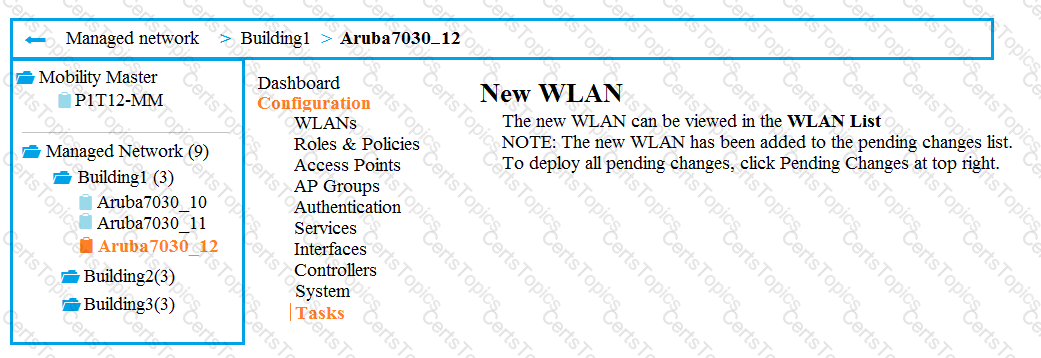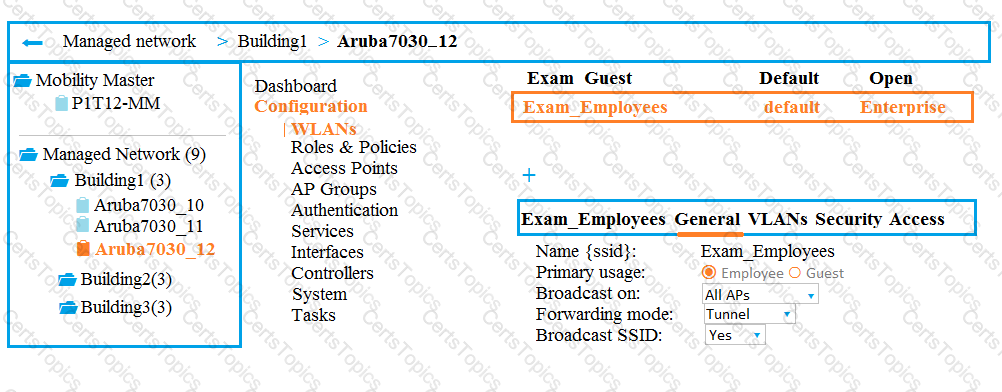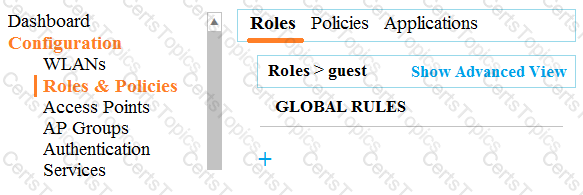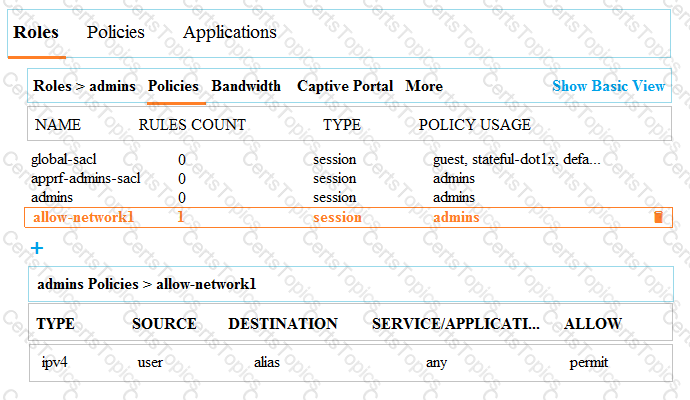Refer to the exhibits.
Exhibit 1

Exhibit 2

A company has an Aruba Mobility Master (MM)-based solution and needs a new WLAN for the corporate campus. A network administrator completes the creation of this WLAN, as shown in Exhibit 1. When the administrator tries to test a connection to the WLAN in various locations, the WLAN sometimes shows up in the list of WLANs on the client but sometimes does not. The administrator can see the WLAN in the list, as shown in Exhibit 2.
What is the error?
What is one difference between captive portal authentication and 802.1X authentication?
A customer has a large campus that requires 400 Aruba 335 APs to support a total of 20,000 wireless users and 12Gbps of traffic. Although the customer wants two controllers for redundancy, each controller must be able to support all of the APs and users on its own.
Which Aruba Mobility Controller models meet the customer requirements and DO NOT unnecessarily exceed them?
What is one difference between how a network administrator can monitor clients in the Mobility (MM) interface and in the AirWave Management Platform?
For which use case should network administrators set up Aruba access points (APs) as multi-zone APs?
What is required for a WLAN that uses WPA2-Enterprise security?
How can network administrator provide high availability for APs deployed in an Aruba Mobility Master (MM)-based architecture?
Refer to the exhibit.

A network administrator adds a global rule in the area shown in the exhibit. Where does the global rule take effect?
Refer to the exhibit.

The alias in the rule shown in the exhibit is network 10.1.1.0/24.
A wireless client is assigned IP address 10.1.2.10/24 and the “admins” role. The wireless client at 10.1.2.10 attempts to initiate a Web session with a server at 10.1.1.2. A wired client at 10.1.1.3 attempts to initiate an SSH session with the wireless client at 10.1.2.10.
How does the Aruba firewall handle these attempts?
Which task can an Aruba Spectrum Monitor (SM) perform?
A company has an Aruba Mobility Master (MM)-based solution with a WLAN that assigns users to VLANs 10–19. The company wants the Aruba solution to act at Layer 3 to route wireless user traffic.
What must network administrators configure to permit the solution to forward traffic correctly?
Refer to the exhibit.

Based on the exhibit, what is the maximum number of APs that this Mobility Master (MM) solution can support?
Refer to the exhibit.

The exhibit shows output from a Mobility Master (MM) dashboard. What does the health status indicate?
Which settings can a Mobility Master (MM) deploy to Mobility Controllers (MCs) but master controllers CANNOT deploy to local controllers?
Which class of controller is more appropriate in a branch installation with up to 64 APs?
A network administrator creates a user account on an Aruba Mobility Master (MM) with the guest-provisioning role. Which task does this user have the rights to perform?
What is one networking setting that a network administrator can configure for roles in an Aruba solution?
A company has an Aruba Mobility Master (MM)-based solution. Under which circumstance will an AP radio change channel without the use of the Mobility Master (MM)?
Which feature is unique to 802.11ac Wave 2 access points?